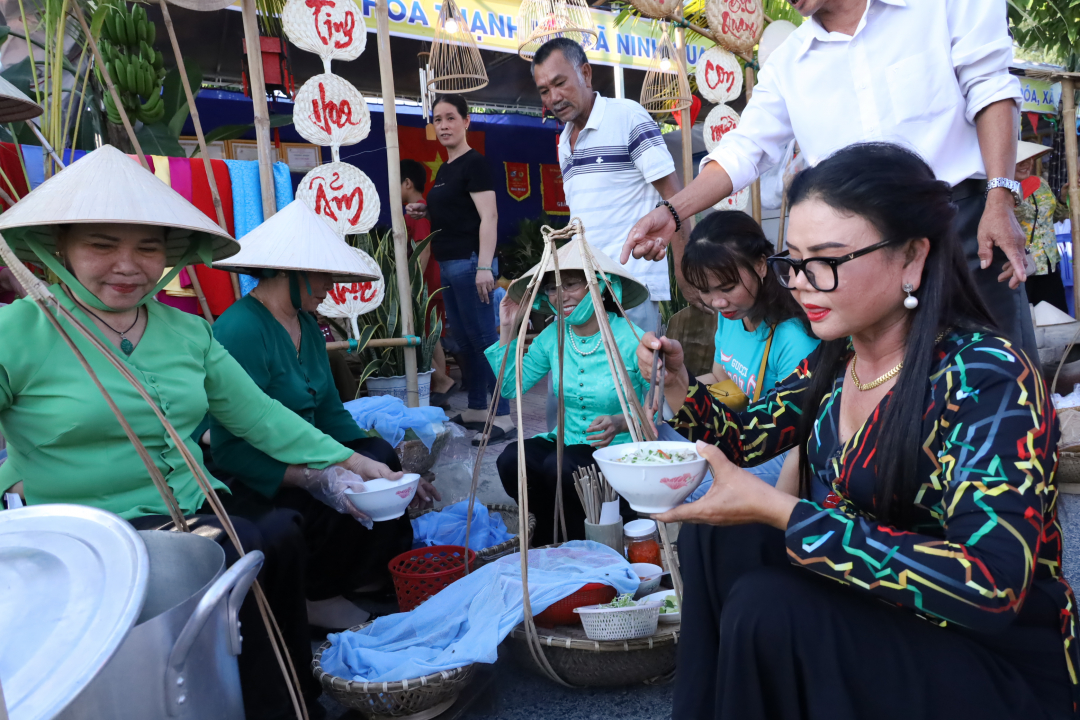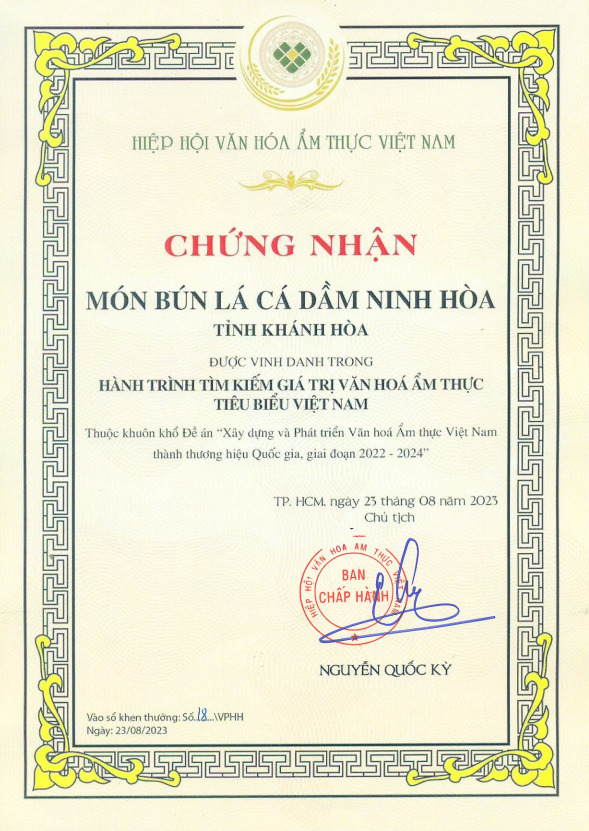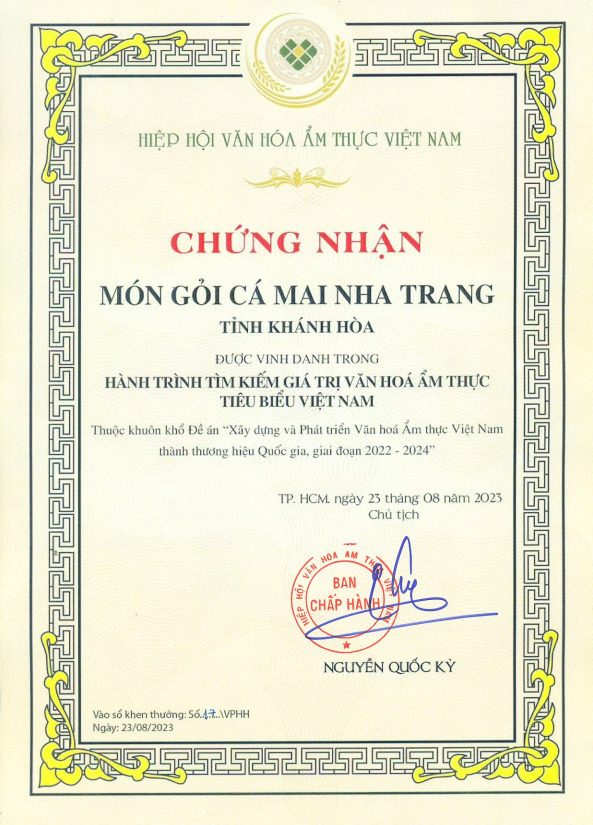The Vietnam Culinary Culture Association (VCCA) has recently presented certificate recognizing three dishes of Khanh Hoa Province as typical Vietnamese cuisine, including “bun la ca dam Ninh Hoa” (Ninh Hoa fish fillet rice noodle soup), “nem nuong Ninh Hoa” (Ninh Hoa grilled meat rolls) and “goi ca mai Nha Trang” (Nha Trang white sardine fish salad).
Moreish traditional dishes
VCCA started to implement the project "Building and developing national culinary culture, 2022 – 2024 period” in 2022. The project recorded the list of 421 dishes nominated by 60 out of 63 provinces and cities nationwide. Experts in the fields of culture, history, food technology, cuisine, etc. carefully evaluated and selected 212 dishes to be recognized as typical Vietnamese cuisine. Khanh Hoa was the only locality nominating three local dishes which were all selected. Ninh Hoa fish fillet rice noodle soup, Ninh Hoa grilled meat rolls and Nha Trang white sardine fish salad boldly bear the traditional taste of Khanh Hoa. These dishes are considered as the first ones contributing to the culinary cultural brand of Khanh Hoa, as said by Le Tan, vice-president of VCCA.
 |
| Ninh Hoa people enjoy fish fillet rice noodle soup |
 |
| Ninh Hoa fish fillet rice noodle soup honored by VCCA |
All the three dishes are familiar to Khanh Hoa people. They aren’t complicated dishes to make but require fresh ingredients. Typical flavors are the main elements making these dishes unique and popular. Ninh Hoa fish fillet rice noodle soup is made with pork, pork skin, fat, wood ear mushrooms, peanuts and special spices, grilled over charcoal, served with raw vegetables, rice noodles and special sauce. Ninh Hoa fish fillet rice noodle soup is made with fish such as mackerel, tuna, barracuda, and sailfish. Rice noodles must be the delicious ones made from local rice in Thanh My Village (Ninh Quang Commune). This dish is also served with raw vegetables. Nha Trang white sardine fish salad is made with fresh boneless white sardine which is marinated in lemon, garlic, and chili and then mixed with chopped herbs, roasted peanut and “thinh” (a special ingredient). Nha Trang white sardine fish salad is eaten with rice paper, raw vegetables and fruits and viscous peanut sauce.
Creating culinary map
According to folklore researcher Ngo Van Ban, Khanh Hoa Province has a rich source of ingredients for processing dishes, contributing to the formation of three different culinary cultures here: marine culinary culture, plain culinary culture; mountain culinary culture. Khanh Hoa people in the far past knew to use natural and man-made ingredients to process delicious and nutritious dishes. Therefore, in order to preserve and put Khanh Hoa dishes on Vietnam’s culinary map, it requires restoration of traditional local dishes and using local ingredients and traditional cooking methods.
 |
| VCCA’s certificates honoring Ninh Hoa grilled meat rolls and Nha Trang white sardine fish salad |
Khanh Hoa’s culinary culture is increasingly popular and has interested many people, as said by Le Thi Hong Minh, president of Khanh Hoa Culinary Culture Association. However, most of the culinary activities in the province are carried out spontaneously. There is a lack of cooperation to create a common culinary brand and promote local dishes effectively. Some traditional recipes are gradually falling into oblivion.
In the time to come, the provincial sectors and localities need to regularly introduce and popularize traditional dishes and cooking methods through social media, fairs, cultural activities, and festivals. Travel agencies need to cooperate with local people and culinary artisans to build tours including activities such as visiting craft villages and enjoying Khanh Hoa specialties. Besides, there should be a traditional food section in festivals. These things will help to make local food promotion strategy with appropriate activities and form culinary map to promote both local food and tourism through appraised restaurants and eateries.
Giang Dinh
Translated by H.N











Thông tin bạn đọc
Đóng Lưu thông tin